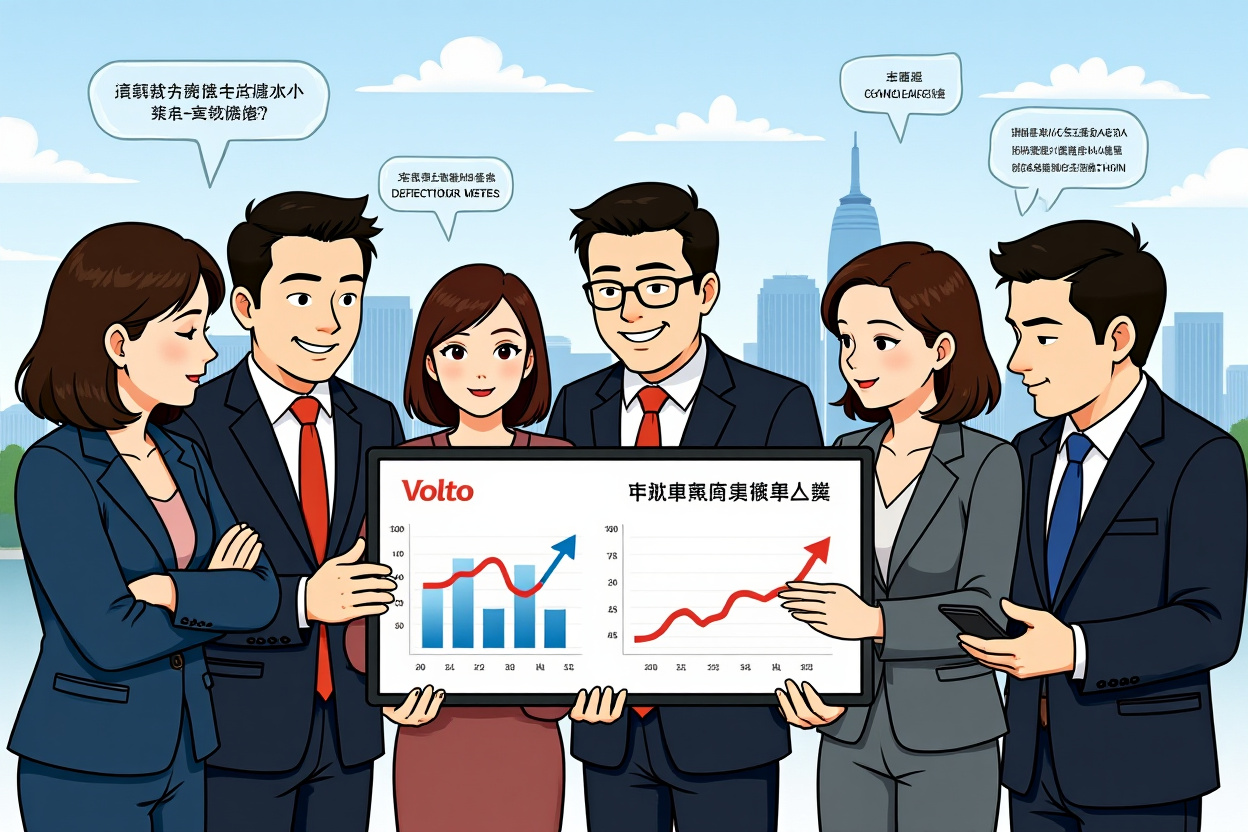The Chinese automotive industry is facing its most significant regulatory shakeup in years as six government ministries unite to combat widespread malpractices that have undermined fair competition and consumer trust. On September 10, the Ministry of Industry and Information Technology (MIIT), Cyberspace Administration of China, Ministry of Public Security, and three other departments jointly issued the ‘Notice on Carrying out Special Rectification Actions against Network Chaos in the Automotive Industry,’ launching a comprehensive three-month campaign targeting three specific categories of misconduct that have proliferated amid intensifying market competition. This automotive industry crackdown represents a decisive move to cleanse the sector of practices that have distorted consumer perception and created an uneven playing field for manufacturers.
The Three Targeted Malpractices in China’s Automotive Sector
The joint notice identifies three specific areas of concern that have become increasingly problematic in China’s hyper-competitive automotive market. These practices have not only misled consumers but have also created an environment where unethical behavior sometimes outperforms legitimate business practices.
Illegal Profiteering: The ‘Black Glove’ Operations
The first category targets what authorities describe as illegal profiteering schemes, often operated by sophisticated networks that have turned defamation into a business model. These operations typically involve creating and amplifying negative content about automotive companies through various channels including social media, video platforms, and supposed ‘independent’ review sites.
These groups employ several tactics: manufacturing false images and videos, creating fabricated stories about automotive companies, maliciously interpreting sales fluctuations, and attacking corporate development strategies. Their business model relies on extracting ‘protection money’ from automakers who pay to avoid negative coverage or to suppress existing damaging content.
More sophisticated operations now utilize technology like motherboard machines and generative AI to create artificial networks of accounts that can generate false trends and bypass platform monitoring systems. These groups often strike during critical moments for automakers – during new product launches, important corporate announcements, or financing rounds – to maximize their leverage and extraction potential.
Exaggerated and False Propaganda: The ‘Bragging Technique’
The second category addresses systematic exaggeration and false claims in automotive marketing and communications. This includes misleading representations of vehicle performance, battery capabilities, quality metrics, and sales figures that deceive consumers and create unrealistic expectations.
A common practice involves automakers manipulating media organizations or review accounts to conduct biased or fake evaluations of their products. This includes citing fabricated data, selectively disclosing favorable sales information while hiding disappointing numbers, and creating various ranking systems under clever guises to position themselves advantageously.
Some companies have been found to exploit industry events such as auto shows, forums, and online marketing campaigns to create artificial buzz and话题 (topics) that generate misleading positive perception. These practices not only harm consumers but also create an environment where factual information becomes increasingly difficult to distinguish from marketing fiction.
Malicious Defamation: The ‘Slanging Match’ Tactics
The third targeted category involves coordinated attacks against competitors through various means of defamation and character assassination. This includes organized efforts to damage rival companies’ reputations, manipulate public perception, and even file malicious complaints against competitors.
The notice specifically mentions the organization and manipulation of internet water armies (网络水军), ‘black public relations’ teams, and even fan communities that coordinate to publish false and negative information about competing automotive companies and their executives. These groups specialize in煽动 (inciting) netizen emotions and initiating ‘word wars’ that damage competitor reputations.
Perhaps most notably, the crackdown addresses the concerning trend of automotive executives themselves using their personal influence and social media platforms to openly ‘pull down and step on’ (拉踩) competitors – a practice that has escalated industry tensions and created a toxic competitive environment.
The Driving Forces Behind the Automotive Industry Crackdown
Several factors have contributed to the current state of affairs that necessitated this significant automotive industry crackdown. Understanding these underlying drivers helps explain why six ministries found it necessary to intervene simultaneously.
Fierce Market Competition and Slowing Growth
China’s automotive market has experienced unprecedented competition in recent years, particularly in the electric vehicle segment where dozens of new manufacturers have entered the space. With market growth slowing after years of expansion, companies are fighting for market share in an increasingly crowded field.
This intense competition has created pressure to stand out at any cost, leading some players to resort to unethical practices. When legitimate differentiation becomes challenging, some entities have turned to manipulating perception rather than improving products.
The situation has been particularly acute in the electric vehicle sector, where technological claims range from legitimate innovations to exaggerated promises. Range expectations, charging speeds, autonomous capabilities, and battery longevity have all been subjects of both genuine advancement and marketing exaggeration.
The Proliferation of Digital Channels and Influence Networks
The digitalization of automotive marketing and communications has created both opportunities and vulnerabilities. While manufacturers can now reach consumers directly through multiple channels, the same infrastructure enables bad actors to manipulate perception at scale.
Social media platforms, video sharing sites, automotive forums, and review platforms have all become battlegrounds where perception is shaped – sometimes through legitimate discourse but increasingly through coordinated manipulation. The architecture of these platforms often rewards engagement regardless of truthfulness, creating incentives for sensational over accurate content.
Influence networks have become particularly sophisticated, with some operations maintaining thousands of fake accounts capable of simulating organic trends. These networks can be deployed to attack competitors, defend against criticism, or create artificial buzz around products – all while maintaining the appearance of genuine public sentiment.
The Impact on Consumers and legitimate Businesses
The proliferation of these malpractices has created significant negative consequences for both automotive consumers and ethical market participants. The automotive industry crackdown aims to address these widespread impacts.
Consumer Deception and Purchase Mistakes
Consumers face increasingly difficult decisions when inaccurate information permeates the market. exaggerated performance claims, fake reviews, and manipulated ratings can lead purchasers to make choices based on false premises, resulting in disappointment and financial loss.
The problem extends beyond performance specifications to safety considerations. When safety claims are exaggerated or test results are manipulated, consumers may unknowingly accept risks they wouldn’t otherwise tolerate. This is particularly concerning with advanced driver assistance systems and autonomous features where overconfidence based on misleading claims could have serious consequences.
Additionally, the manipulation of resale value projections through fake demand indicators and manipulated pricing data can distort total cost of ownership calculations, further complicating consumer decision-making.
Unfair Competition and Market Distortion
For legitimate businesses that refuse to engage in these practices, the current environment creates significant disadvantages. Companies investing genuinely in product development, quality improvement, and ethical marketing find themselves competing against rivals who achieve visibility through manipulation rather than merit.
This distortion creates perverse incentives where resources that should be allocated to genuine improvement instead get diverted to perception management. The automotive industry crackdown seeks to rebalance these incentives toward product excellence rather than propaganda excellence.
Market newcomers face particular challenges when entering a space where established players may have built influence networks and manipulation systems. Without equivalent capabilities or willingness to engage in similar practices, ethical newcomers struggle to gain traction regardless of product quality.
The Regulatory Approach and Implementation Framework
The six-ministry automotive industry crackdown employs a multi-faceted approach that addresses both the symptoms and root causes of the identified problems. The framework combines several enforcement mechanisms.
Self-Inspection and Corporate Accountability
A significant component of the approach requires automotive companies and relevant platform businesses to conduct thorough self-examinations and correct violations proactively. This element recognizes that sustainable improvement requires internal compliance systems rather than just external enforcement.
Companies are expected to examine their marketing practices, review relationships with media and influencers, assess the authenticity of their communicated claims, and ensure they’re not engaging in or benefiting from any of the prohibited practices. The automotive industry crackdown emphasizes corporate responsibility for maintaining ethical standards.
Platform companies face particular responsibilities to enhance their detection capabilities for artificial content networks, especially those utilizing generative AI technologies. They’re required to improve reporting mechanisms, dispute labeling systems, and rumor clarification features to prevent misinformation from misleading the public.
Reporting Channels and Public Participation
The initiative establishes multiple reporting channels for identifying violations, including platform-based reporting, complaints to the Cyberspace Administration’s illegal and undesirable information reporting center, and reporting to provincial-level cyberspace administration offices.
This multi-channel approach recognizes that different stakeholders might prefer different reporting mechanisms. Industry insiders, competitors, employees, and consumers all potentially have relevant information but may have different comfort levels with various reporting avenues.
The system aims to make reporting accessible while providing appropriate protections for whistleblowers. Given the organized nature of some violations, protection against retaliation is essential for encouraging disclosures.
Enforcement Actions and Public Disclosure
The notice emphasizes swift action against violators, including依法依约 (according to law and agreement) closing accounts and publicly exposing media accounts participating in automotive industry network chaos. This public disclosure component serves both punitive and deterrent functions.
Beyond immediate account actions, authorities intend to trace network chaos back to the public relations companies, marketing agencies, and client automakers behind these operations. This deeper investigation aims to address the ecosystem that enables these practices rather than just punishing individual manifestations.
The automotive industry crackdown represents a comprehensive approach that moves beyond superficial fixes to address the underlying business models that have made these practices profitable.
Industry Response and Expert Perspectives
The automotive industry crackdown has generated significant discussion among industry participants and observers. Many welcome the intervention as necessary for restoring integrity to market competition.
Cui Dongshu (崔东树), Secretary-General of the China Passenger Car Association, believes the action holds great significance for purifying the automotive consumption environment and constraining the network privileges of black media. He notes that the ultimate beneficiaries will be all enterprises that focus seriously on manufacturing quality vehicles and consumers who rely on accurate information.
Industry analysts suggest that the timing reflects recognition that these practices had reached levels that threatened the healthy development of China’s automotive sector, particularly as Chinese manufacturers expand globally and require reputation for quality and integrity.
International observers are watching closely as China’s automotive industry represents both massive domestic production and growing export potential. Ethical business practices are increasingly important for global market acceptance.
The Path Forward for China’s Automotive Industry
The three-month intensive automotive industry crackdown represents a significant intervention, but sustainable improvement will require ongoing attention and industry commitment. Several factors will determine long-term success.
Building Ethical Marketing Capabilities
For many companies, moving away from prohibited practices will require developing alternative capabilities in legitimate marketing and communications. This may involve investing in genuine product advantages that can be communicated truthfully rather than relying on exaggeration or manipulation.
Companies may need to rethink their relationships with media and influencers, ensuring transparency and authenticity in these partnerships. The era of ‘friendly reviews’ in exchange for access or advertising may need to give way to more arms-length relationships that maintain critical independence.
Technology Solutions for Authenticity Verification
As manipulation techniques become more sophisticated through AI and other technologies, detection and prevention methods must equally advance. Platform companies particularly face challenges in identifying artificially generated content and coordinated inauthentic behavior.
Some industry participants are exploring technological solutions such as blockchain verification of review authenticity, AI detection of manipulated media, and improved algorithms for identifying coordinated manipulation campaigns. These technical solutions will need to evolve alongside the manipulation techniques they combat.
International Alignment and Global Standards
As Chinese automotive companies expand globally, they increasingly need to align with international standards regarding marketing claims, review authenticity, and competitive practices. The current automotive industry crackdown may help accelerate this alignment.
Global automotive markets typically have established regulations against false advertising, defamation, and unfair competition practices. China’s actions bring its domestic standards closer to these international norms, potentially reducing compliance challenges for exporters.
Restoring Integrity to Automotive Competition
The six-ministry automotive industry crackdown represents a critical intervention at a pivotal moment for China’s automotive sector. By addressing the three key areas of illegal profiteering, false propaganda, and malicious attacks, authorities aim to restore fairness and integrity to market competition.
For consumers, the actions promise more accurate information and reduced manipulation of purchasing decisions. For ethical market participants, they offer hope for a more level playing field where product quality outweighs propaganda prowess. For the industry overall, they represent an opportunity to build sustainable competition based on genuine innovation rather than perception manipulation.
The success of this automotive industry crackdown will depend on consistent enforcement, industry cooperation, and the development of alternative marketing approaches that don’t rely on prohibited practices. As the three-month intensive period unfolds, all stakeholders will be watching to see if this intervention can truly transform competitive dynamics in one of China’s most important industries.
The automotive sector represents both substantial economic value and technological ambition for China. Ensuring its healthy development requires addressing not just technical challenges but ethical ones as well. This comprehensive automotive industry crackdown acknowledges that truthfulness and integrity are not optional luxuries but essential foundations for sustainable industry growth.
Consumers, manufacturers, and industry observers should monitor implementation closely and support efforts to create a more transparent and ethical automotive marketplace. The future of automotive innovation depends on competition that rewards genuine advancement rather than manipulative practices.




